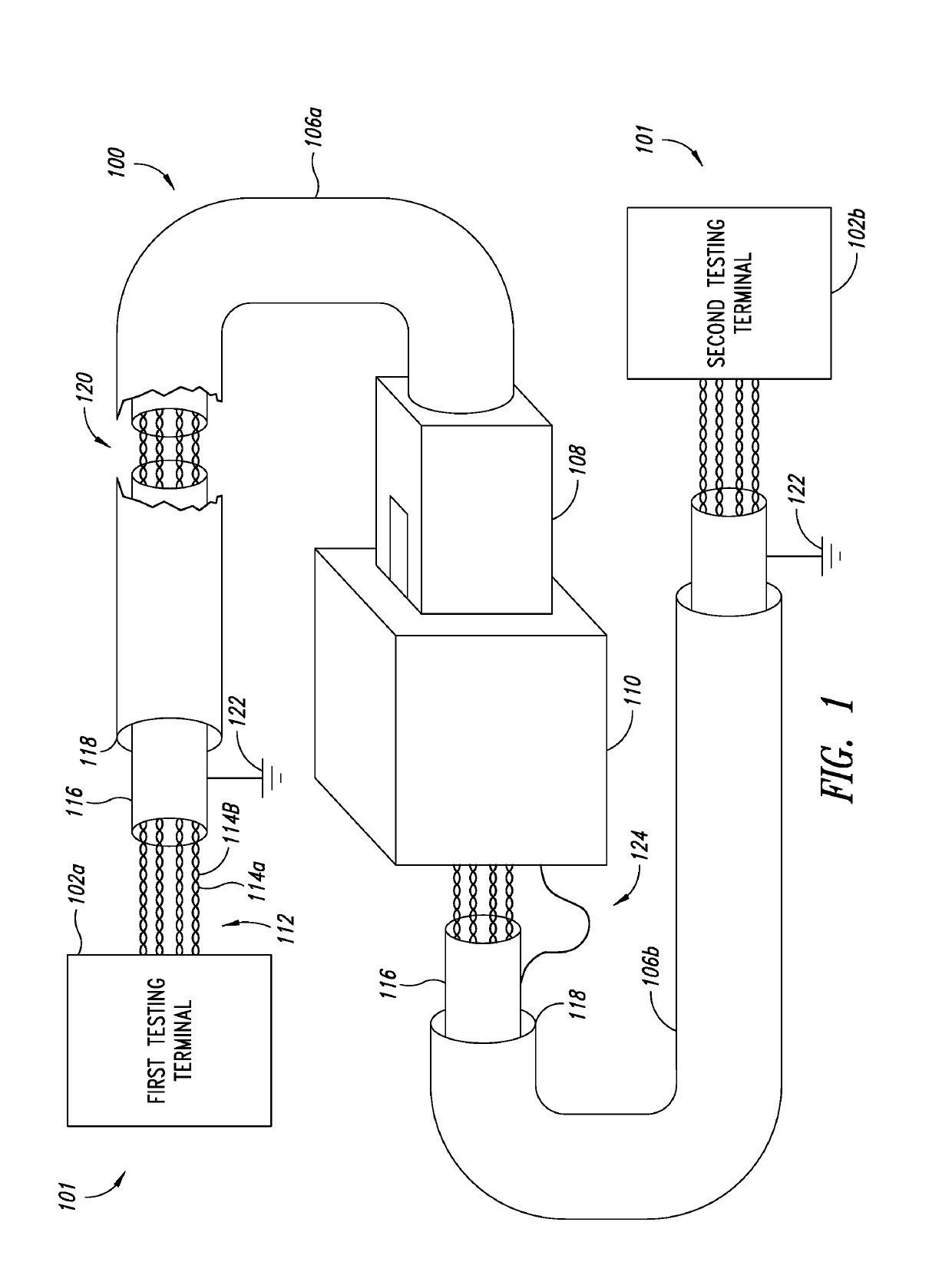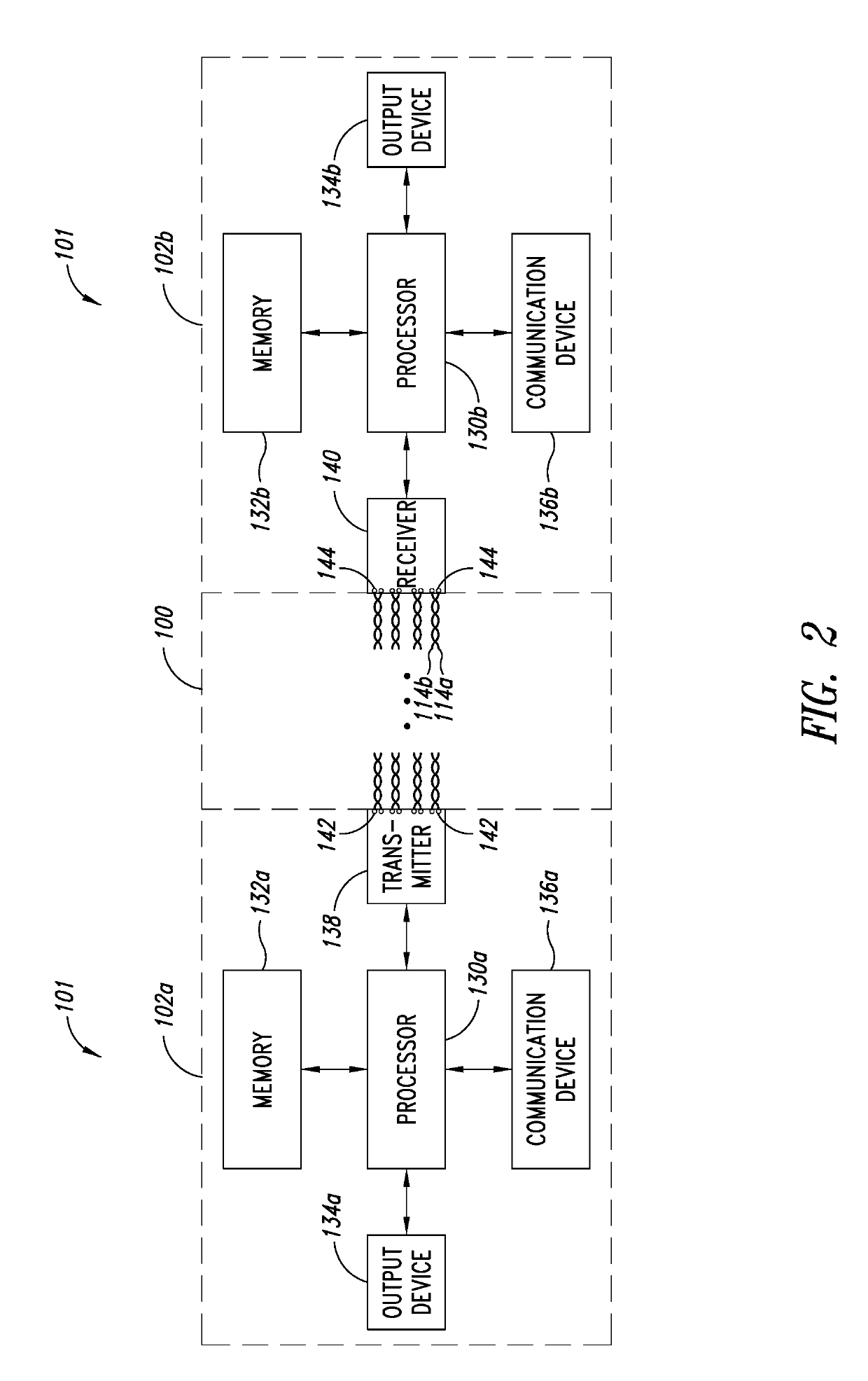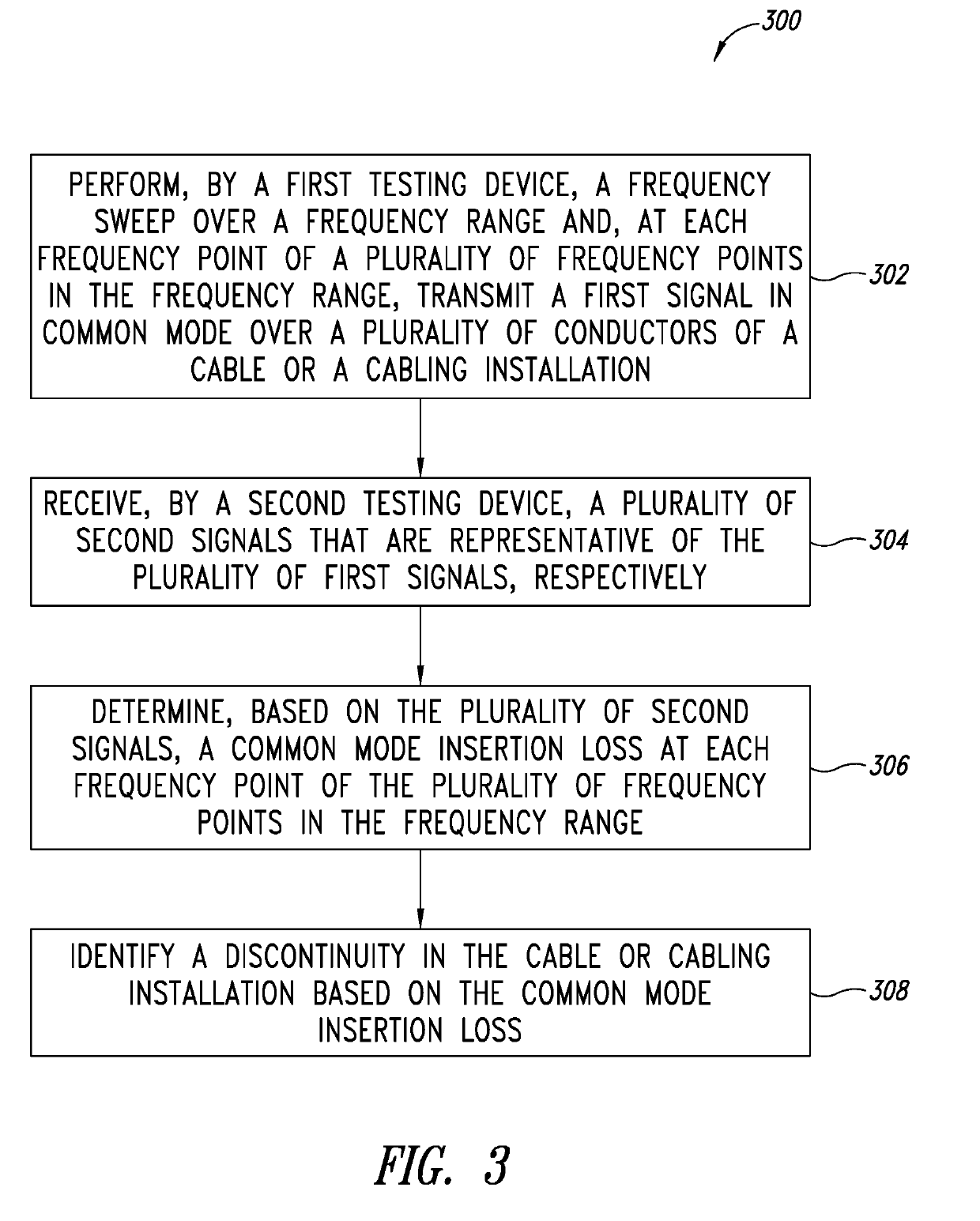Testing shield continuity of a cable or cabling installation using common mode insertion loss
a technology of shield continuity and common mode, which is applied in the direction of insulated conductors, cables, instruments, etc., can solve the problems of shield continuity verification techniques that are prone to yield false positive tests, direct current (dc) verification techniques that are prone to yield false negative tests, and the performance of crosstalk (xt) of cables, so as to increase the propagation delay and reduce the propagation delay
- Summary
- Abstract
- Description
- Claims
- Application Information
AI Technical Summary
Benefits of technology
Problems solved by technology
Method used
Image
Examples
Embodiment Construction
[0021]FIG. 1 shows a cabling installation 100 under test coupled to a testing device 101. The testing device includes a first testing terminal 102a and a second testing terminal 102b. The cabling installation 100 includes a first cable 106a and a second cable 106b (collectively referred to herein by the numeral alone) connected together using a connector plug 108 and a connector jack 110. It is noted that although a cabling installation 100 including multiple cables 106 is described with reference to FIG. 1, the techniques described herein may be used for testing an installation with any number of cables or for testing one cable.
[0022]Each cable 106 includes a plurality of twisted pairs of conductors 112. Each pair 112 includes a first conductor 114a and a second conductor 114b twisted around each other to reduce electromagnetic radiation and crosstalk and improve external electromagnetic interference rejection. Although the plurality of twisted pairs are shown in FIG. 1 to include ...
PUM
| Property | Measurement | Unit |
|---|---|---|
| frequency | aaaaa | aaaaa |
| frequency | aaaaa | aaaaa |
| frequency | aaaaa | aaaaa |
Abstract
Description
Claims
Application Information
 Login to View More
Login to View More - R&D
- Intellectual Property
- Life Sciences
- Materials
- Tech Scout
- Unparalleled Data Quality
- Higher Quality Content
- 60% Fewer Hallucinations
Browse by: Latest US Patents, China's latest patents, Technical Efficacy Thesaurus, Application Domain, Technology Topic, Popular Technical Reports.
© 2025 PatSnap. All rights reserved.Legal|Privacy policy|Modern Slavery Act Transparency Statement|Sitemap|About US| Contact US: help@patsnap.com



